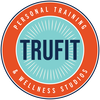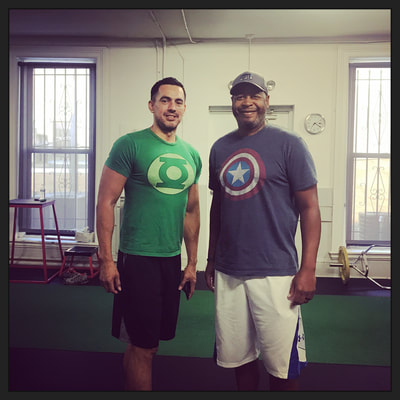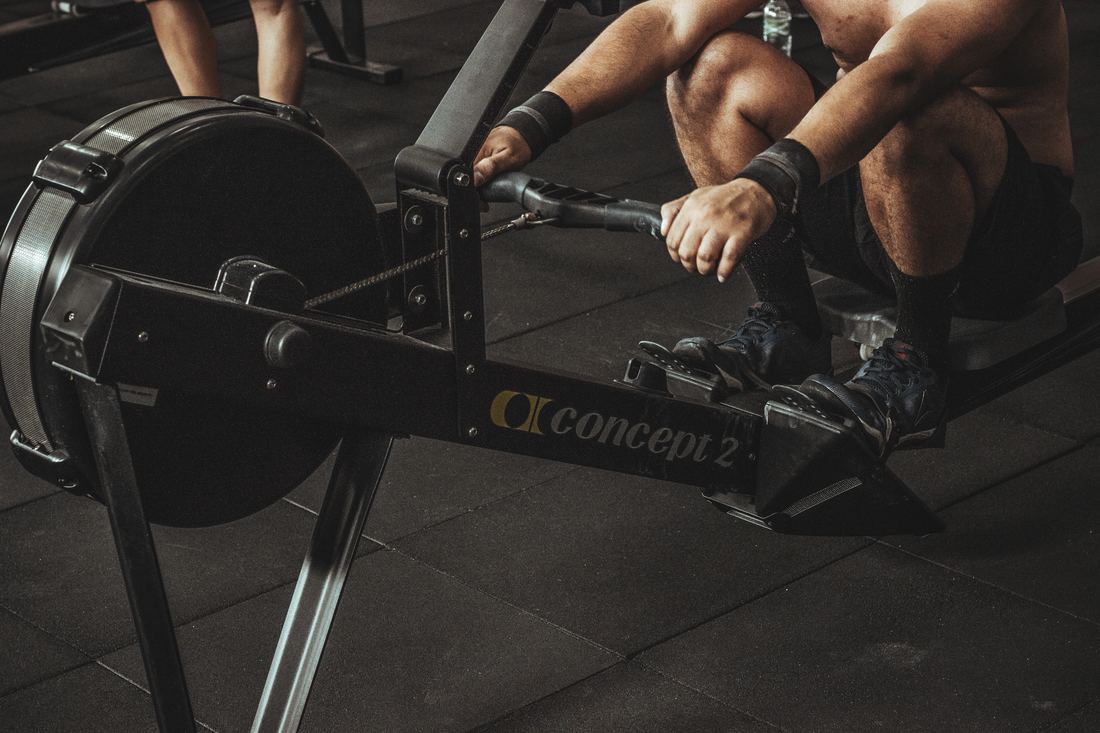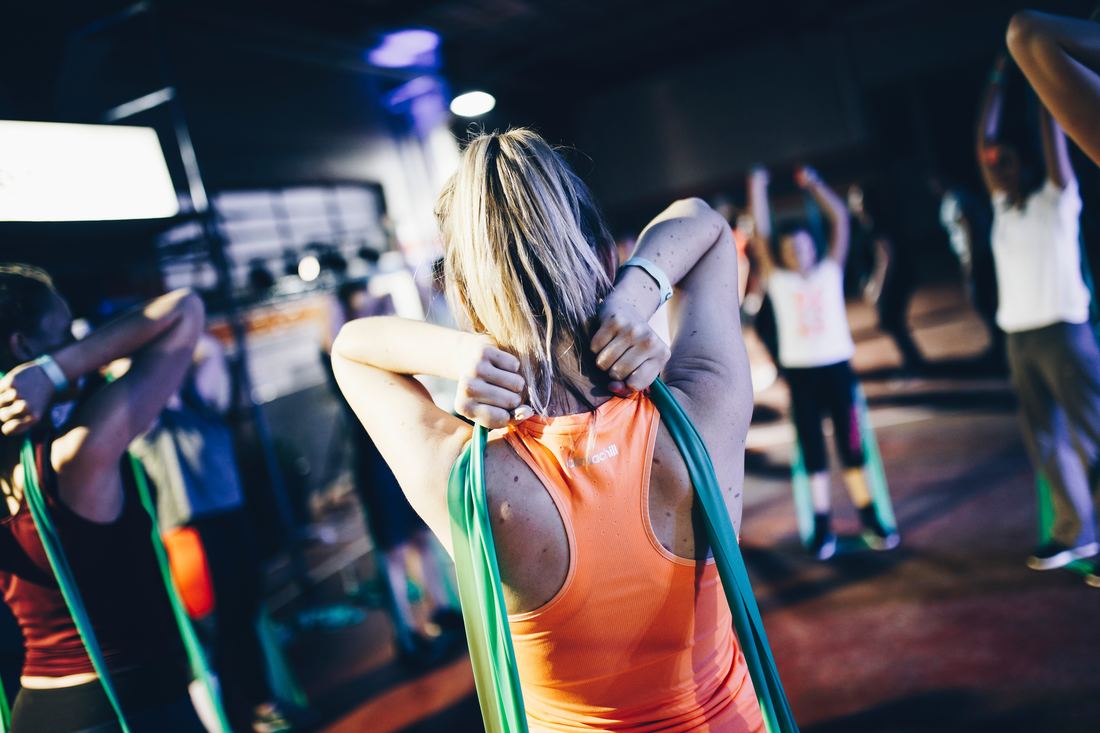|
Happy National Superhero Day! We all like to feel strong, capable, invincible even...a superhero in our daily work and personal lives. When we think of heroic acts, daring rescues from burning buildings and tales of battlefield bravery often spring to mind. But heroism on a smaller, individual scale is also worthy of acknowledgement and celebration. When do you feel the most heroic and empowered? Maybe it’s after teaching your son or daughter an important life lesson, or nailing your new self-care routine, or successfully completing that major work project. Maybe it’s after hitting a new mile mark on your run, or adding weight to those deadlift reps! At TruFit, we’re all about that superhero attitude and feeling (and t-shirts, as you might already know from our Instagram!). So before you see Avengers: Infinity War this weekend, or clean out your garage, or sit down to finalize that white paper, etc., get fully pumped and in that superhero zone with these 3 Superhero-Worthy Workout Moves! 1) The Superman While Superman flies through the air, you'd better believe he's using his core in that fully-extended plank! As Marco demonstrates the Superman above, here are some things to keep in mind:
2) The Wonderlift Amazonian Wonder Woman is known to be one of the strongest people in the DC Universe! While that strength and power might have been handed down from the gods, it's also no secret that the stronger the glutes, the more powerful you can be! Here, Mary demonstrates a mover we're calling the "Wonderlift": The one-legged deadlift (also known as the non-surgical butt lift, if you'd like to know). Here are a few things to keep in mind:
3) The Spiderman
Climbing around like Spiderman is a total-body exercise that not only works your arms and your legs but also works your core and connects the opposite sides of your body together and allows both sides of your brain to fire! So when we say it's total-body we include your mind! Here's what to look for when performing Spiderman crawls:
Looking to build superhero strength? Start with these three exercises! Pepper them into your existing program or make a quick circuit for yourself by doing each of these exercises back to back for 3-5 rounds! Want more assistance with your training? Feel free to reach out to us! Email us here or call 312-497-8999!
0 Comments
(Guest post)--Hey TruFit readers! April is National Stress Awareness Month, which means it’s a wonderful time to talk self-care. To help us, we’ve handed today’s post over to Amanda Tarver, LMT. She is the owner and practitioner of Women’s Massage Therapy in downtown Evanston, where she offers a variety of women’s therapeutic bodywork, and pregnancy and postpartum services. We are thrilled to be sharing her self-care wisdom and tips here on the TruFit Blog! What Is Self-Care?
Self-care can involve any regular activity (or activities) that we do specifically to take care of our physical, mental, and emotional needs. Self-care can mean different things to different people, and your own self-care needs may change many times throughout your life. Examples of self-care can include:
Self-care is not the same thing as pampering. Although treating ourselves to something special can be good for our emotional, physical, or mental well-being, pampering is generally something that we engage in rarely or inconsistently (Example: Enjoying a glass of Champagne on a Tuesday; spending an entire morning in bed with some aromatherapy and a good book; splurging on a piece of art or a pair of shoes that you love). Good self-care, on the other hand, requires regular practice, even though that practice may change. Why Should I Practice Self-Care? When we take the time to regularly care for ourselves and recharge, we are able to be our best selves. Think about it… do your best interactions with others occur when you are feeling well or when you’re feeling poorly? People who engage in regular self-care tend to be more productive, happier, healthier, and may even live longer. Their interactions with others tend to be more positive because they feel good, which leads to improved relationships, and fewer instances of anger, frustration, irritation, etc. Good stuff, right? So how do you get started?  Nope, sugar is NOT better for you than high-fructose corn syrup. Nope, sugar is NOT better for you than high-fructose corn syrup. Bad health and fitness advice is, and always has been, plentiful and pervasive. Wanting to look and feel our best is a universal desire, so it’s no surprise we’re constantly being inundated with recommendations for pills, products, exercises, and regimens purported to help us achieve that goal. But how many of us can separate fitness myths from the facts? Some fitness myths and falsehoods are harmless, even well-intentioned (Aunt Wendy swears drinking raw vinegar and lemon juice will boost your energy...except no, and yuck). Many false claims and trendy products will cost you time and money (Fat-burning belts? Weight-loss sunglasses? Umm, no) and leave you with poor results. In the worst-case scenario, trusting a false health or fitness hack can be downright dangerous (Tiffany Haddish recommends turpentine. P.S. DON’T DRINK TURPENTINE!). At TruFit Personal Training Studios Evanston, we are blessed to have a diverse group of personal trainers (with an equally diverse knowledge base) sweating it out and sharing their wisdom under one roof! So we asked them: What are the most common fitness myths you hear or get asked about? Check out their answers below! 10 Common Fitness Myths (Debunked by TruFit) Fitness Myth #1: Lifting weights makes women “bulky” The Truth: While lifting weights gives muscles more of a "shape" (which some people call "tone" or “definition”), women do not have the hormonal makeup to get "bulky" like male lifters do. And just like lifting heavy weights won't "bulk up” women like a bodybuilder, doing exercises like Barre Method will not create "long dancer muscles" either. TruFit trainer Izzy Libmann points out, “Your body's reaction to your training loads is largely based on genetics! So if you’re looking for a certain type of body shape, you may be out of luck depending on your genetic makeup.” But with all of this being said, if getting bulky is a concern, we won’t turn a deaf ear. Always discuss this with your trainer! The best you can do is perform your exercises and monitor your progress. Fitness Myth #2: Eating throughout the day quickens your metabolism The Truth: While digesting a meal does temporarily spike your metabolism, there is no evidence that eating more frequently will increase your metabolic rate. The REAL difference-maker is the total number of daily calories consumed. Also, individuals who eat several small meals per day tend to consume MORE total calories (and feel less satiated after eating) than those who eat 3-4 square meals per day. So unless you’re a rockstar calorie counter, you’re probably better off just eating three healthy meals per day! Fitness Myth #3: High intensity is the only way to get results The Truth: While high intensity exercise has its time and place (we're talking sprints, Tabata training, CrossFit, high-intensity interval training), overdoing it can lead to overtraining and injury. We recommend mixing in "light" and "medium" days during the week to complement the "heavy" day(s). And remember, the harder you train, the harder you have to recover (eating well, sleeping enough, meditation, getting massages, etc). If high intensity is your jam, do watch for signs of overtraining. Some of these are: Feeling more tired/wiped out than usual; feeling dread before a workout; chronic soreness, like you can’t get over your last workout; a sudden drop in your training performance; getting sick more often. If you’re experiencing these, it might be a good idea to back off of the intensity to ward off an injury that will sideline you for weeks or months. Fitness Myth #4: Lots of crunches or sit-ups will give you a six-pack The Truth: “In order to see a six-pack, you need to lower your body fat percentage with proper nutrition and workouts, not with 1000 crunches or sit-ups,” says TruFit trainer Marco Gonzalez. We’re talking a combination of a variety of exercises (not just exercises targeting your six-pack itself) and a HUGE dose of nutritional support (eating mostly whole foods, watching your carb/fat/protein ratio, consuming little to no sugar or alcohol). We highly recommend checking out this Precision Nutrition infographic to give you an idea of how much six-packs cost. In fact, crunches and sit-ups are likely doing you more bad than good when it comes to your lower back! If you want to train your “core,” perform more anti-rotation exercises like this or this or do total-body exercises like deadlifts, push-ups, squats, etc (yes, those ARE also core exercises). Fitness Myth #5: Running is the best way to lose weight The Truth: Losing weight will happen when there is a calorie deficit (meaning more total calories are burned than consumed). While running does burn some calories and helps people lose weight, the bigger bang for the calorie-burning buck is actually in lifting weights! The more muscle you have, the higher your metabolism will be. That does not mean you shouldn't run if you like it and it makes you feel good! "It's always best to cross-train," adds Izzy. "When we do too much of one thing, like only running without strength training for example, we may be asking for trouble." So do try to get a good mix of movement in throughout the week for overall health. Fitness Myth #6: Regular sugar is less fattening than high-fructose corn syrup (HFCS) The Truth: The amount of fructose found in regular table sugar and HFCS is almost the same. The difference between the amount is negligible; the body processes them the same way, meaning that if we have too much of it, it gets converted to fat and can lead to type 2 diabetes and metabolic syndrome. A very important note: While, yes, fresh fruit does contain some fructose, that fruit also has plenty of fiber and other nutrients to offset the absorption of fructose into your bloodstream! Also, one serving of fruit has a LOT less fructose in it than, let's say, juice or a candy bar. In other words, added sugars--all added sugars--aren’t doing you any favors, so try to consume them as little as possible and stick to whole, unprocessed foods. Fitness Myth #7: You can spot reduce problem areas The Truth: “When a client says, ‘I want to get rid of the fat on my thighs,’ they are expecting to target this area with exercise and think the body fat will go away from that area only,” explains TruFit trainer Megan Davies. “When you lose body fat, your overall body will reduce fat, not only in specific areas. We all tend to gain and lose weight in certain areas and that can be dictated by our body type. The cool thing is, while we can’t target fat loss in one specific area, we CAN strengthen every single body part!” Getting lean and burning fat requires a diet of mostly whole foods (with little sugar and alcohol), getting your heart rate up multiple days per week, and a combo of total-body exercises (think push-ups vs just doing tricep kickbacks, or squats vs only the leg extension machine)! Fitness Myth #8: Training to “failure” is good for you The Truth: You know the saying "keep a quarter in the tank" so your car doesn't run out of gas? Same goes for training. “The biggest negative effect of training to failure is how it affects your central nervous system,” explains TruFit trainer Kathryn Lehner. “It has the potential to overload your CNS, making it hard to train frequently, causing lots of fatigue, and making recovery time last longer. As a result, it can affect the rest of that workout as well as workouts later in the week. Also, form has the potential to break down when fatigue gets too high. Might as well end on a good rep!” Aim to feel like you can do 1-2 more reps in your set at the stopping point. If you want to keep a good relationship with exercise and stay free of injury, keep a quarter in the tank. Fitness Myth #9: Squats and lunges are bad for your knees The Truth: To quote Dan John, “It's not the squats that are bad for your knees; it could be the way you're doing the squats that's bad for your knees.” TruFit trainer Brian Kirshenbaum says, “When properly executed, the squat and lunge (in its various forms) are terrific for strengthening your quads and glutes. It’s these very muscles that when strong, help prevent problems with our knees in the first place!” If squats and lunges have hurt you in the past, it could be good to get a trusted pro to help you out! Fitness Myth #10: There's no point in strength training until you lose that extra 5, 10, or 15 pounds The Truth: “First off, strength training does burn calories,” says TruFit trainer Sarah Laspas. “It does NOT have to be slow-paced, and depending on how you structure your workouts, it's possible to sweat A LOT. Second, unlike cardio, you'll continue to burn calories for 1-2 days after a solid strength training session--basically, you're shedding fat and building muscle at the same time. Hooray for efficiency!” We hope this information was helpful, or at the least, gave you some tidbits to ponder on your health and fitness journey! Regarding other health and fitness claims, we strongly suggest you exercise (pun intended!) caution. Seek out reviews or conclusions from credentialed medical experts, fitness professionals, and peer-reviewed research studies to help you make smart choices.
Got a fitness question that you need help with? Want to bust some more fitness myths? We’d love to hear from you! Leave a comment below or email us at [email protected]. |
Archives
April 2024
Categories! |














 RSS Feed
RSS Feed